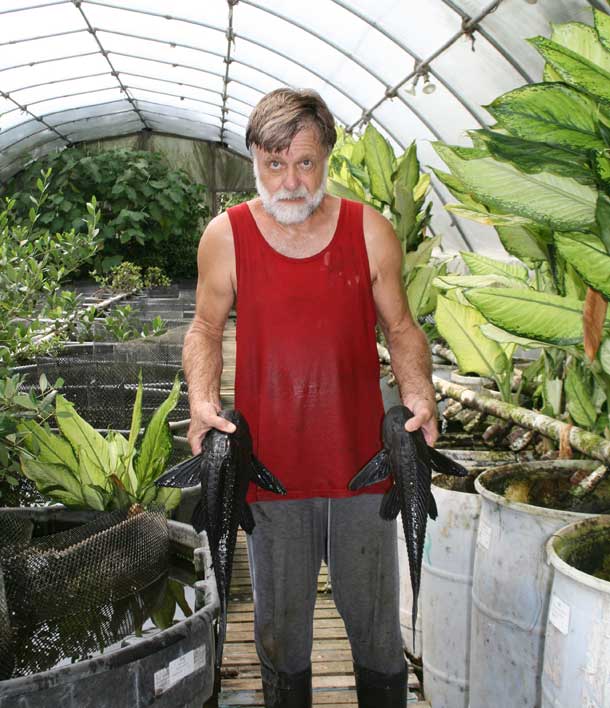Today we processed our Sciaenochromis fryeri (commonly known as Electric Blue Ahli Cichlids). But, this blog isn’t about them; it’s about plecostomus.
We put our breeding colonies of cichlids, usually 6 males and 40-50 females, in 300 gallon vats, where they stay for three to four months before we harvest the young cichlids. Our greenhouses are ecosystems not completely under our control; they offer a number of challenges. For example, we have three species of snakes that are into multiple generations in the greenhouses. Worse, we have pond snails and duckweed. We barely control the duckweed by harvesting it and feeding it to our chickens; it’s their all-time favorite food. Due to our planned over-feeding to encourage rapid growth of the fish, we also have healthy populations of hair algae. To control both the snails and the algae, we place 2-3 plecostomus (Hypostomus plecostomus) in each 300 gallon vat. Their huge appetites control the snails via eating the egg cases and maybe even the adults. The algae is one of their staple foods. I say staple because their preferred food is the 50% protein fish food we feed to our fish.
Anyway, we broke down the Sciaenochromis fryeri vat and temporarily moved the two plecostomus to a cage in the next vat. After harvesting the cichlids and returning the breeder cichlids to their vat, I picked up the two plecostomus to return them to their home. The photo shows this. The larger, fatter fish is the female and the thinner fish the male. They are rarely happy about being handled and retaliate when they can. Their lateral spines are vicious. I paid for the indignity of picking them up with several abrasions on my hands and fingers.


Leave a Reply